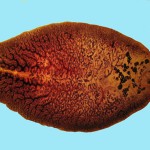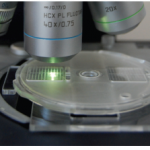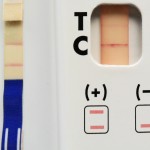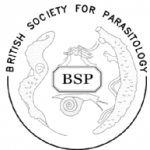On the 25th and 26th September the BSP held their autumn symposium entitled “Advances in diagnostics for infectious diseases” at the scenic location of Ness Gardens, Wirral (UK). The 2-day event hosted by Professor Russel Stothard (LSTM, UK) and Dr Emily Adams (LSTM, UK) was jam-packed with excellent talks and poster presentations from world renowned parasitologists and up-and-coming scientists. It was also great to see enthusiastic MSc students from the LSTM representing the future of parasitology.
The event focused on where we are today in terms of diagnostics for malaria, trypanosomiasis, leishmaniasis and helminth infections such as facioliasis, filariasis and schistosomiasis; outlining the ongoing need for better tools in the lab and out in the field, but also highlighting encouraging advances in diagnostic technology.
Professor Rosanna Peeling (LSHTM, UK) kicked off the symposium explaining why the lengthy and expensive process from product development through to implementation desperately needs to be shortened. The current process currently takes roughly 20 yrs- an unacceptably long time, when you consider the number of lives lost as a result. She explained “we need to cut down on the number of trials and the time taken to implementation”- which will also cut the cost of diagnostics in the long term. This tied nicely into Dr Mariska Leeflang’s (Academic Medical Center, Holland) talk about the importance of study design and appropriate evaluation of diagnostics, which could reduce the time and costs involved in product development.
Professor Bertie Squire and Ivor Langley (LSTM, Liverpool) presented their linked operational and transmission model for tuberculosis, which will aid health systems in estimating the impact of new TB diagnostics.
After the recent outbreak of shiga-toxin-producing E.coli in Germany was identified by metagenomics, Professor Mark Pallen’s (University of Warwick, UK) enthused about the potential of these techniques for pathogen identification using frozen and even mummified tissues!
Professor Peter Chiodini (Hospital for Tropical Diseases, UK) and Dr Martha Bateson (Royal Vetinary College, UK) explained how new PCR- based assays have allowed more precise characterisation of the epidemiology of malaria. It was interesting to hear that P. malariae and P. ovale sspp, are much more prevalent than originally thought. Although, currently available RDTs are unable to distinguish between these two species, as it is not a priority for clinicians. As we progress towards elimination, such an RDT will be needed to get a clearer picture of the epidemiology of plasmodia spp.

Professor Jozef Vercruysse ( University of ghent, Belgium), Professor Santiago Mas-Coma and Dr Delores Bargues (University of Valencia, Spain) talked about helminth infections in animals and humans (respectively). New developments in serology using milk, serum- and intriguingly- “meat juice” (muscle transudate) is a useful measure of the economic impact (milk production, weight gain etc) of Ostertagia, Fasciola and Ascaris infections in animals. On the other hand, coproscopy ,together with serology still plays a major role in the diagnosis of human facioliasis. Finally, Professor Diana Williams and Dr Jane Hodgkinson (University of Liverpool, UK) presented data that show fluke (Fasciola) infections can result in failure to accurately diagnose bovine TB in cattle. Furthermore, resistance to triclabendazole (TCBZ-R) in Faciolopsis has emerged and efforts are being put into the early detection of TCBZ-R as it is the main drug for facioliasis.
Similarly, Professor Martin Donelly (LSTM, UK) described how genomic and transcriptomic approaches are being used to identify insecticide-resistance associated variants. Due to the strong positive selection of resistance markers; especially in cotton- growing areas with heavy insecticide usage, one of the biggest challenges is identifying low-prevalence resistance markers before they are selected for. One way they are tackling this is through the integration of DNA diagnostics into disease surveillance programmes.
Professor Russell Stothard (LSTM, UK) illustrated the desperate need for morbidity RDTs for schistosomiasis, whilst Professor David Rollinson (National History Museum, UK) described how LAMP and RT-PCR methods are being used to expand the little knowledge we have of the distribution of snails. They also revealed that there is worrying evidence of bovine and human schistosome hybridisation and consequentially infection of new vectors and hosts.

The diagnostics for Chagas disease are complicated by the different lineages (TcI-VI) of T. cruzi. Professor Michael Miles (LSHTM, UK) describes how the oligochromatographic dipsticks using lineage specific diagnostic markers could better this. Furthermore, he presented major molecular diversity of kinesin genes which could account for the poorer performance of rK39 RDTs amongst different populations.
Other new technologies included newly evolved FLOTAC products; the mini-FLOTAC and the fill-FLOTAC (pictured on the right). These have been modified to aid diagnosticians in both laboratory and field settings and could replace traditional flotation techniques (presented by Dr Laura Rinaldi, University of Naples, Italy).
Professor Moses Bockarie (LSTM) also introduced the simpler, easier-to-store and cheaper new Alere Filariasis Test Strip (pictured), which could replace the current BinaxNOW Filariasis RDT.

Multiple speakers touched on the hot topic of Loop-mediated isothermal DNA Amplification (LAMP) techniques for use in the field. The relatively low-cost technology requires minimal equipment and training to use compared to other molecular methods. Although not technically quantifiable, standard curves could be established to estimate parasite burden in the future.
Professor Mark Perkins (FIND, Switzerland) closed the event on an uplifting note, presenting new technologies such as the SD BIOLINE HAT test and again touching on LAMP methods for malaria. Finally he ended with a poignant thought; that the concept of “Us” vs “Rest Of World (ROW)”, in terms of life expectancy and number of children per family, is out of date- that we are, officially, “one world”.
At the start of the event, Professor Rosanna Peeling introduced us to her acronym ‘ASSURED’, the requirements for the perfect diagnostic tool- Affordable, Sensitive, Specific, User-friendly, Rapid, Equipment free, and Deliverable ( i.e, cheap, fast, simple and accurate). A very big ask, but it was great to see research making such significant steps towards this. We look forward to the BSP spring symposium in Cambridge next year!


One Comment